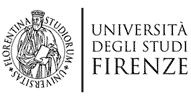AMFIRST
Assesment of Masss Fluxes Induced at emeRgent breakwaterS' Trunk
Team Partecipants:
-
University of Florence: L. Cappietti, P.L. Aminti
-
TU-Brauschweig: H. Oumeraci, A. Korthenhaus
Project Coordinator: L. Cappietti
Funds: University of Florence
Project Aims: During a wave attack on a coast protected by permeable emergent block-mound breakwaters, a significant amount of water mass can pass behind the barriers. In principle, two mechanisms are responsible for this shoreward water flux, namely Wave Overtopping (WO) and Wave-Induced Filtration (WIF). The sum of WO and WIF fluxes is called here Overall Flux (OF).
There have not been many studies of the OF. Though the WO itself has been measured by several researchers in laboratory and field experiments (EurOtop, 2008, Bruce and al. 2010 Schüttrumpf et al. 2010, Van der Meer et al. 2010), most of these considered impermeable core structures like sea dikes, revetments, or harbor breakwaters where WO was measured in tanks positioned behind the barriers. On the contrary, the measurements of WIF through permeable shore defense breakwaters have received less attention (Cappietti et al 2006) despite being the main mechanism of the WPF for this type of breakwaters during relatively moderate storms where WO is a rare event.
In this perspective, a better understanding of WPF and its flux components (WO and WIF) is crucial to expand the present knowledge about the mechanisms on water set-up behind the breakwater, wave transmission and as such its role in coastal circulation behind permeable emergent rubble-mound breakwaters.
Objectives: The key objectives of this study may be summarised as follows:
-
To measure the WO and WIF by means of laboratory experiments on scale models of permeable block mound breakwaters;
-
To provide simple empirical equations to estimate magnitudes of WO and WIF, water set-up and wave transmission behind the breakwater, depending on still water conditions and sea state parameter seaward the breakwater;
-
To compare results for permeable emergent block mound breakwaters against mounds with artificial cubic elements and standard rubble mound breakwaters;
-
To estimate effects of structural parameters such as porosity, slope, geometrical dimensions on the WPF;
Pubblications
-
Cappietti L., Kortenhaus A. Oumeraci H. (2012) Laboratory measurements of WAVE INDUCED mass fluxes at emergent rubble-mound breakwaters. Coastlab12, 2012, Ghent, Belgium. Book of Abstracts of the Fourth International Conference on the Application of Physical Modelling to Port and Coastal Protection.


